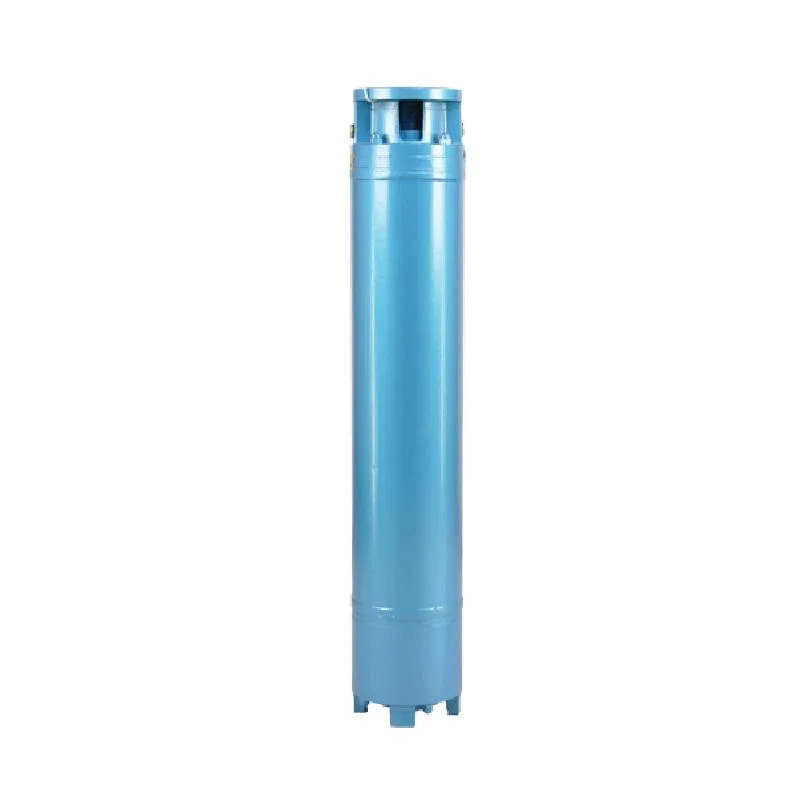Nov . 15, 2024 18:15 Back to list
submersible motor
The Importance and Functionality of Submersible Motors
Submersible motors have become indispensable components in various industries, particularly in applications involving fluid transportation, water treatment, and cooling processes. These motors are designed to operate underwater or in a submerged environment, making them particularly effective for specific technical challenges.
Understanding Submersible Motors
At its core, a submersible motor is an electric motor that is entirely submerged in the fluid it pumps. Unlike standard motors that are mounted above the water level, submersible motors are installed within the water or other fluids they are intended to work with. This design allows for a direct coupling between the motor and the pump, which significantly enhances efficiency.
Submersible motors come in various sizes, power ratings, and designs, depending on their intended use. They are utilized in many applications, including borehole and groundwater extraction, industrial process applications, wastewater treatment, and even in aquaculture.
Advantages of Submersible Motors
One of the primary advantages of submersible motors is their efficiency. Operating submerged reduces the need for additional mechanical sealing and minimizes energy losses often associated with conventional above-ground pumps. The direct coupling of the motor and pump leads to reduced energy consumption, making these systems more environmentally friendly and cost-effective.
Another significant advantage is their reliability and durability. Since submersible motors are designed to operate in a hostile environment, they are constructed using materials that can withstand corrosion and degradation caused by water and other liquids. Sealing technologies have also evolved, ensuring that the motor components are protected from moisture ingress. This design means that submersible motors often have a longer lifespan compared to traditional motors.
Submersible motors also excel in versatility. They can be used in various applications, from deep wells to open bodies of water. For instance, submersible pumps used for groundwater extraction can reach considerable depths, making them suitable for agricultural irrigation, drinking water supply, and even geothermal heating applications.
submersible motor

Challenges in Submersible Motor Applications
Despite their numerous advantages, submersible motors are not without challenges. The design and manufacturing process is more complex than that of standard motors. Ensuring effective seals that can withstand high pressure and unwanted liquids is critical and requires precision engineering. Furthermore, submersible motors must have appropriate cooling mechanisms, as they generate heat during operation. Proper design considerations must be taken to ensure they perform optimally even when submerged in various fluid temperatures.
Additionally, submersible motors require routine maintenance and inspections. While they may be more durable, periodic checks are crucial to ensure they continue functioning correctly and to prolong their lifespan. This is particularly important in critical applications such as wastewater treatment or aquaculture, where equipment failure can lead to significant operational disruptions.
Future of Submersible Motors
The future of submersible motors looks promising due to ongoing advancements in technology. Innovations in materials science and engineering are leading to even more robust and efficient designs. For instance, the integration of smart technology into submersible motors allows for remote monitoring and control. This development leads to better performance management and predictive maintenance, reducing downtime and operational costs.
Moreover, as industries push towards sustainable practices, submersible motors aligning with these goals will play a pivotal role in environmental conservation. They can effectively manage resources, such as water in irrigation, without the excessive energy costs associated with traditional pumping systems.
Conclusion
In conclusion, submersible motors represent a critical technology across various sectors, providing efficient, reliable, and versatile solutions for fluid transportation. As technology continues to evolve, we can expect submersible motors to enhance their performance further, thereby ensuring they meet the emerging needs of industries worldwide. Their ability to operate effectively in submerged conditions while maintaining high efficiency cements their importance in modern engineering solutions, making them an integral part of the future landscape in water management and other fluid applications.
-
Submersible Water Pump: The Efficient 'Power Pioneer' of the Underwater World
NewsJul.01,2025
-
Submersible Pond Pump: The Hidden Guardian of Water Landscape Ecology
NewsJul.01,2025
-
Stainless Well Pump: A Reliable and Durable Pumping Main Force
NewsJul.01,2025
-
Stainless Steel Submersible Pump: An Efficient and Versatile Tool for Underwater Operations
NewsJul.01,2025
-
Deep Well Submersible Pump: An Efficient 'Sucker' of Groundwater Sources
NewsJul.01,2025
-
Deep Water Well Pump: An Efficient 'Sucker' of Groundwater Sources
NewsJul.01,2025
-
 Submersible Water Pump: The Efficient 'Power Pioneer' of the Underwater WorldIn the field of hydraulic equipment, the Submersible Water Pump has become the core equipment for underwater operations and water resource transportation due to its unique design and excellent performance.Detail
Submersible Water Pump: The Efficient 'Power Pioneer' of the Underwater WorldIn the field of hydraulic equipment, the Submersible Water Pump has become the core equipment for underwater operations and water resource transportation due to its unique design and excellent performance.Detail -
 Submersible Pond Pump: The Hidden Guardian of Water Landscape EcologyIn courtyard landscapes, ecological ponds, and even small-scale water conservancy projects, there is a silent yet indispensable equipment - the Submersible Pond Pump.Detail
Submersible Pond Pump: The Hidden Guardian of Water Landscape EcologyIn courtyard landscapes, ecological ponds, and even small-scale water conservancy projects, there is a silent yet indispensable equipment - the Submersible Pond Pump.Detail -
 Stainless Well Pump: A Reliable and Durable Pumping Main ForceIn the field of water resource transportation, Stainless Well Pump has become the core equipment for various pumping scenarios with its excellent performance and reliable quality.Detail
Stainless Well Pump: A Reliable and Durable Pumping Main ForceIn the field of water resource transportation, Stainless Well Pump has become the core equipment for various pumping scenarios with its excellent performance and reliable quality.Detail
